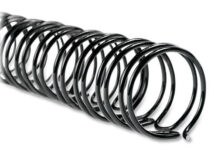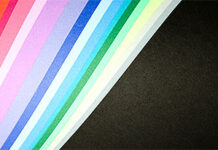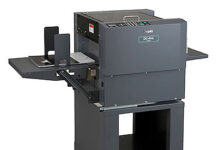by: Woody Powers II, Jorson & Carlson
A knife supplier or servicing company with expertise in knife quality, knife handling and product application, as well as the know-how to install cutting knives properly, can provide useful best practices to improve cut quality and increase knife life. In most cases, implementing new procedures will increase quality and production time by eliminating costly knife change time.
Fundamental Questions for Cutting Jobs
When cutting products such as books, labels, and letterhead, it is paramount that operators abide by strict fundamentals to achieve optimum cuts and production. Questions to ask before making the first cut include the following:
- Has the job been coordinated with prepress, press, and bindery to supply the most efficient layout for all involved? Are the right paper weight and paper size being used for the job? Too much trim can cause excess waste and deflection problems, like back bone chipping on a perfect bound book.
- Is the correct equipment being used for the job? Is proper maintenance provided for the equipment per OEM recommendations?
- Will the cutter, folder, stitcher, or perfect binder produce a product quality that is acceptable to your customer?
- Does the operator have the knowledge needed (and the ability to engage that knowledge) for the job given to him?
Good housekeeping, proper job layout, good machinery, the right paper, and the correct cutting knives, ground by a professional knife grinding service, will provide a quality finished product.
Increasing Cut Quality
A full-time bindery with multiple shifts should be using inlaid knives manufactured with 18 percent tungsten alloy or – the ultimate in wear resistance – carbide. Both of these out-produce carbon steel cutting knives. Many people are confused by the term “18 percent tungsten” – it is not carbide, but rather an alloy steel with 18 percent tungsten mixture. The term “carbide” also is misrepresented and misunderstood. There are different grades of carbide. One of the best, most wear-resistant grades is MG28, an ultra-fine grain.
Using upgraded metallurgy maintains the desired cut quality for a longer production time. Never upgrade knife quality to improve cut quality. There are companies that sell coatings or offer to rebuild old knives; however, there are no substitutes for upgrading the metallurgy to improve longevity.
Proper Installation
Proper installation of cutting knives is very important in achieving longer lasting cut quality. Changing knives quickly will not improve quality. A job done right will improve quality and longevity, while also allowing distortion-free cuts.
When changing knives, never place a new knife on the cutter bed. This will ensure a knick-free knife is installed. Instead, always place the knife on a piece of chipboard or on a changing table with the cutting edge facing away. Using Kevlar gloves, clean the knives with a solvent to remove any oil, dirt, etc. Visually check the knife edge for imperfections. The same cleaning procedures must be applied to the cutting machine where the knives are mounted. With 3-knife trimmers, clean the holders where the knife is mounted. Remember that any surface upon which the knife is mounted becomes an extension of the cutting knife. Any paper, dust, or grease trapped between the knife and the machine can cause problems.
When installing guillotine knives as per OEM instructions, always back off the knife setting adjustments so the knife will not cut through the last sheet of paper. When tightening mounting bolts on larger knives, always start tightening from the middle out to the sides; smaller knives tighten from one side to the other side. Using this procedure nearly ensures that a bow will not be trapped in the knife, causing deflection in the cut and making it hard to seat the knife. Make the final knife adjustment in the cutter as needed – just enough to cut through the last sheet of paper.
When using cutting sticks, make sure the stick is properly seated in the stick channel. Cleaning this channel is very important in getting an even setting of the knife. If the channel is not clean, the blade will be damaged on the first penetration. Once the blade has been seated to the cutting stick, do not cycle the knife lower into the stick to get a cleaner cut. If needed, change the stick. If this needs to be addressed often, a blade change is needed.
Knife Grinding
When the knives are dull, send them to a qualified knife grinding service. Just as bindery equipment has evolved, so has grinding equipment and the techniques used to sharpen knives and remove burrs.
A grinding service that grinds the knives first, and then hones the knives by hand is using an older, outdated procedure. With this process, the degree of sharpness depends on the pressure exerted by and the steadiness of the person honing the knives. This will leave scratches, marks, and back bevels on the face of the knife, which can lead to knife deflection problems and product marking.
The new knife grinding technology incorporates state-of-the-art grinding equipment to grind and mechanically hone knives on the same machine. This guarantees burr removal and precise blade sharpness, ensuring consistent repetition from knife to knife.
With the help of the right vendors, implementing new procedures will increase quality and production time by eliminating costly knife change time. A few simple changes can help bindery owners improve quality without spending a lot of money by using the equipment on hand.
Woody Powers II has served as the president and owner of Jorson & Carlson since 1992, after beginning employment with the company in 1964. Jorson & Carlson is a third generation company, which began in 1917. It is a full service company specializing in precision grinding, with six locations in the United States. For more information, call (800) 656-7766 or email sales@jorsonandcarlson.com.




